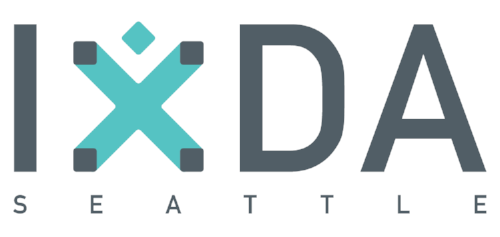Seattle Community Spotlight: Interview with Kaitlyn Zhang
Kaitlyn’s Headshot
Tell us who you are
I got my Bachelor's in Business Administration with a focus on Information Systems. During my time in college, I worked several part-time jobs on campus to try out what I would be interested in. I worked as an IT Support Technician, a Graphic Designer, a Data Analyst, and a Web Accessibility Specialist. From all of this exploration, I realized that I was interested in finding a way to integrate technology with design to enhance the user’s experience. It wasn’t until I stumbled upon some YouTube videos where I learned about user experience. I did a lot of research on my own to learn about what user experience design is. Through my research, I found out about the Human-Centered Design and Engineering (HCDE) master's program, which I applied to and pursued at the University of Washington. During my master's, I had an internship at Visa as an accessibility intern. I used the design and research skills I learned from HCDE to apply to my internship. One of the projects I worked on as an intern was implementing an accessibility annotation kit. It helps designers to comment accessibility-specific considerations on their design work and to better communicate with developers that are tasked to turn the designs into code. It better communicates the underlying intent behind a design and provides an entry point for a niche, jargon-heavy vocabulary that needs to be shared across different teams and organizations.
After I graduated, I became a Design Accessibility Analyst at Visa where I focused on providing resources for designers, researchers, and engineering teams to develop accessible products in the organization. I mainly conduct research with internal users to understand their knowledge of accessibility. I also conduct research with external users, specifically people with disabilities, to directly collaborate with them and gain a better understanding of how accessible our Visa products are.
Which experience you mentioned before was the milestone or significant moment in your journey as a designer that has shaped your career?
In my master's program, one of the milestones is my capstone project. Our project was a service design approach where we centered on healthcare services to understand the relationship between patients and providers. Patients want to establish relationships beyond their annual checkups. Our project was to enhance patients’ relationships with their providers.
Prior to my capstone, I didn’t have a background in service design or healthcare. Throughout the entire design process, I learned a lot of design principles, research, and methodologies for me to use in the professional field.
I was able to work alongside patients and healthcare providers to explore their pain points and needs. We hosted a co-design/participatory workshop, where we brought both patients and providers to collaborate with each other. We had conversations to understand each other’s users' needs. Service design was really good because it not only touches on the user need but also expands to the whole organization from the start of the healthcare journey to the end. I learned a lot from the design process and even applied some knowledge to my current profession.
What challenges have you encountered along the way, and how have you overcome them?
One of the biggest challenges is understanding and being able to work around ambiguous project requirements. A lot of my projects start with ideas from stakeholders, but they don’t necessarily have clear ways to implement it. They have many unclear and constantly changing project requirements. It made it challenging to define a clear design direction.
A resolution for that is to initiate many collaborative and discovery phases to clarify project goals and requirements. I need to work closely with my shareholders and project managers to have a shared understanding of user needs, project objectives, adaptation of the changes, and maintain an open-mind conversation.
What are some of the most valuable lessons or takeaways you've gained from your experiences as a designer and would like to share with other design peers?
I think the most valuable lesson is advocating and implementing accessibility early on in the design process in order to create a product that’s user-friendly and compliant with legal standards.
This prevents designers from having to redesign later in the development. Additionally, accessibility creates a positive brand image and reflects your organization’s values.
Do you have any suggestions for people who are trying to break into the accessibility field?
The accessibility field is always evolving and it may be intimidating for people to get into. You can start by thinking about how your design can be furthermore accessible with a web accessibility checklist. Also, network and expand your accessibility community. The best way is to ask questions and learn from them.
Do you have any design resources that we can share with others?
One of the resources we use at Visa is makeifable.com. Fable focuses on digital accessibility by connecting designers and researchers with people with disabilities for user testing, user research, and quality assurance of digital products. You are able to get on a call with them to ask questions or get advice on how to better improve an idea or design. They’re bridging the gap between digital technology and the disability community.
Do you have any goals or aspirations for your future as a designer in your career that you’d like to share with our community members?
Eventually, I want to become a mentor. Especially for mentoring those who are trying to find out what they want to do professionally. Looking at my own journey, I changed my major a lot of times. At that time, I would’ve wanted a mentor to give me guidance on how to approach my professional path. So, I hope to offer guidance on career choices, help mentees navigate their careers, and set goals for more informed decisions for their professional journey.

